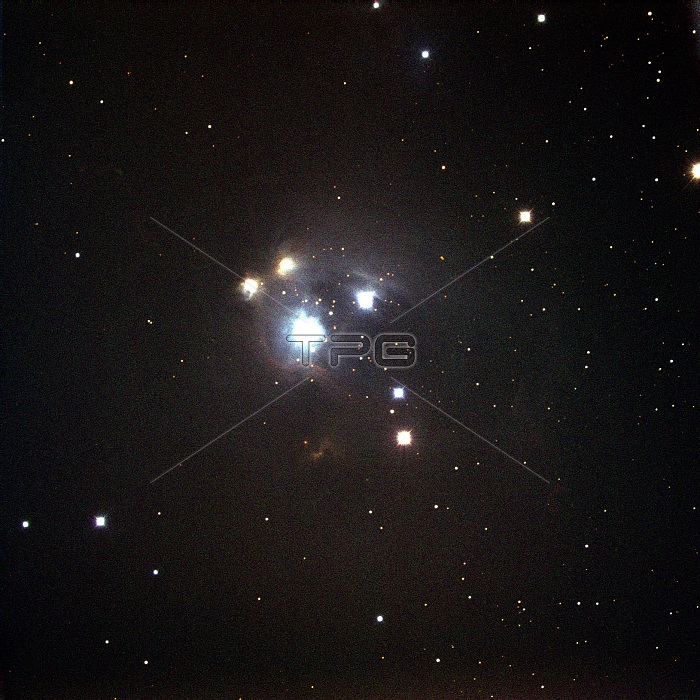
NGC 7129 is a star-forming and photodissociation region and reflection nebula in the constellation Cepheus. Studies suggest that the principal stars in this region are well under a million years old, and are all still contributing to further star formation. To the right somewhat below center in this image, those of you with good eyesight, clear screens, and a good dose of wishful thinking, should be able to see two small red patches, which constitute the Herbig Haro object number 103. In fact, this complex region contains several HH objects, of which HH103 is the brightest and the only one visible in this relatively shallow picture. HH objects are formed when the energetic outflow from a young stellar object (on its way to becoming a full-fledged star) ionizes a slightly denser part of the interstellar medium, which then glows in the red light of H-alpha, given off as the hydrogen recombines. This energetic region also includes several molecular masers. This picture was obtained during the year 2000 Research Experiences for Undergraduates program, funded by the National Science Foundation, using the Kitt Peak National Observatory's 2.1-meter telescope.
| px | px | dpi | = | cm | x | cm | = | MB |
Details
Creative#:
TOP22316332
Source:
達志影像
Authorization Type:
RM
Release Information:
須由TPG 完整授權
Model Release:
N/A
Property Release:
No
Right to Privacy:
No
Same folder images:

 Loading
Loading